Top 8 Home Textiles Importing Countries
Md. Joynal Abdin*
Business Consultant & Digital Marketer
Co-Founder & CEO of Bangladesh Trade Center
International trade of home textiles plays a significant role in the global economy. Home textiles encompass a wide range of products used in households for various purposes, including bedding, towels, curtains, rugs, and upholstery fabrics. The international trade of these goods involves both import and export activities, with various countries engaging in the exchange of home textile products.
Here are some key points regarding the international trade of home textiles:
- Major Exporting Countries: Several countries are major exporters of home textiles due to their strong manufacturing capabilities and competitive advantages. China, India, Pakistan, and Turkey are some of the leading exporting nations in this industry. These countries have a significant presence in both mass-produced items and high-quality home textiles.
- Major Importing Countries: Countries with high demand for home textile products but limited domestic production often rely on imports. The United States, Germany, the United Kingdom, Japan, and France are among the top importing nations. These countries import home textiles to meet consumer demand and supplement their domestic supply.
- Global Supply Chains: The home textiles industry is characterized by complex global supply chains. Raw materials might be sourced from one country, sent to another for manufacturing, and then distributed to various countries for retail and consumption. This intricate network of production and trade allows for cost-effective production and diverse product ranges.
- Trade Agreements and Tariffs: The international trade of home textiles can be affected by trade agreements and tariffs between countries. Free trade agreements can reduce or eliminate tariffs, facilitating smoother trade flow. On the other hand, the imposition of tariffs and trade barriers can impact the cost and availability of home textile products in specific markets.
- Consumer Preferences: Home textile imports are influenced by consumer preferences and trends. As consumers seek unique and diverse products, importing countries may source home textiles from different regions to offer a wide array of designs and styles.
- E-commerce Impact: The rise of e-commerce has significantly impacted the international trade of home textiles. Online marketplaces enable consumers to access products from around the world, promoting cross-border trade and opening up new opportunities for manufacturers and retailers.
- Sustainability and Regulations: Increasing awareness of environmental and ethical concerns has led to a greater emphasis on sustainable and responsibly produced home textiles. Countries with strict regulations and eco-friendly practices may gain a competitive advantage in the international market.
- Market Competition: The international trade of home textiles is highly competitive, with manufacturers and exporters vying for market share. Quality, pricing, design, and timely delivery play crucial roles in determining success in this industry.
Overall, the international trade of home textiles is a dynamic and ever-evolving sector, driven by changing consumer demands, manufacturing capabilities, and global economic conditions. As with any trade, it’s subject to fluctuations influenced by geopolitical events, trade policies, and consumer preferences.
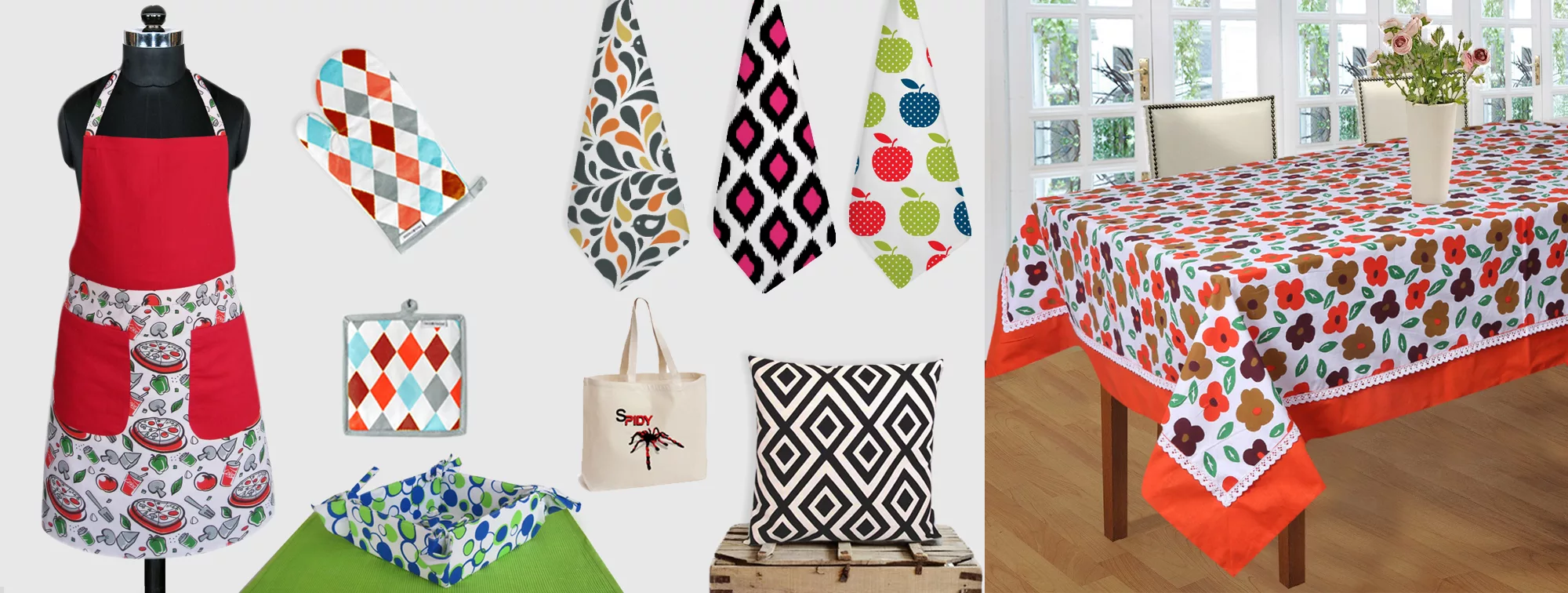
List of Bangladeshi Home Textiles Products:
Bangladesh is a significant player in the home textiles industry, and it offers a wide range of home textile products to both domestic and international markets. Some of the key Bangladeshi home textiles products include:
- Bed Linens: Bedsheets, bedspreads, duvet covers, pillowcases, and bed skirts made from various materials like cotton, microfiber, and blends.
- Towels: Bath towels, hand towels, beach towels, and kitchen towels made from cotton or terry cloth.
- Curtains and Draperies: Various types of curtains, drapes, and window treatments for both residential and commercial use.
- Table Linens: Tablecloths, placemats, table runners, and napkins for dining tables.
- Kitchen Textiles: Kitchen towels, oven mitts, pot holders, and aprons.
- Bathrobes: Comfortable bathrobes made from soft fabrics like cotton or microfiber.
- Rugs and Carpets: Area rugs, floor mats, and carpets for home décor and functional use.
- Cushion Covers: Decorative cushion covers for sofas, chairs, and beds.
- Blankets and Throws: Warm blankets and throws for use on beds or couches.
- Upholstery Fabrics: Fabrics used for furniture upholstery, such as sofas and chairs.
- Quilts and Comforters: Quilted bedding products for added warmth and style.
- Pillow Inserts: Pillow inserts filled with synthetic or natural materials.
- Mattress Protectors: Covers to protect mattresses from stains and spills.
- Shower Curtains: Waterproof curtains for use in bathrooms.
- Baby and Kids’ Textiles: Baby blankets, crib sheets, and kids’ bedding with playful designs.
Bangladeshi home textiles products are known for their affordability, quality, and diverse designs. The country’s home textiles industry has grown significantly over the years, attracting buyers from around the world. Manufacturers in Bangladesh often cater to the specific needs and preferences of international markets, providing custom designs and private labeling options for retailers and brands.

Top 8 Home Textiles Importing Countries:
- United States
- Germany
- United Kingdom
- Japan
- France
- Canada
- Australia
- Netherlands
UNITED STATES
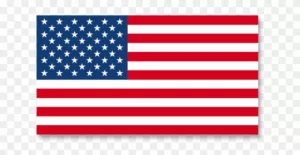
The United States is one of the largest importing countries for home textiles products. Despite having a substantial domestic textile industry, the U.S. still imports a considerable amount of home textiles to meet consumer demand for a diverse range of products, cost-effectiveness, and to complement its domestic production. Some key points about the United States as an importing country for home textiles products include:
- High Demand: The U.S. has a large population with diverse tastes and preferences, leading to significant demand for home textiles products. Consumers seek a wide variety of designs, styles, and price points, which drives the need for imports to supplement domestic supply.
- Consumer Trends: Consumer trends and preferences change rapidly in the United States. As a result, retailers and manufacturers often turn to imports to quickly adapt to the latest fashion and design trends in the home textiles industry.
- Cost Competitiveness: Importing home textiles from countries with lower production costs can be cost-effective for U.S. businesses. Countries like China, India, Pakistan, and Turkey are major exporters of home textiles to the U.S. due to their competitive pricing.
- Global Supply Chains: The U.S. is part of complex global supply chains for home textiles. Raw materials and partially finished products may come from one country, undergo processing or assembly in another, and then be shipped to the U.S. for distribution.
- E-commerce Impact: The rise of e-commerce has facilitated the import of home textiles into the U.S. Consumers can access products from international sellers through online marketplaces, expanding the range of options available.
- Trade Agreements: Trade agreements, such as the North American Free Trade Agreement (NAFTA) or the United States-Mexico-Canada Agreement (USMCA), have influenced the import of home textiles into the U.S. by reducing or eliminating tariffs and trade barriers with partner countries.
- Private Labeling: Many U.S. retailers and brands collaborate with international manufacturers to produce private-label home textiles products, enabling them to offer exclusive designs to customers.
- Product Diversity: The U.S. imports a wide range of home textiles products, including bedding, towels, curtains, rugs, upholstery fabrics, and more, to cater to the diverse needs of consumers.
- Quality Control and Standards: Importers in the U.S. must adhere to quality control and safety standards to ensure that imported home textiles products meet regulatory requirements.
- Competition and Market Dynamics: The import of home textiles contributes to a competitive market in the U.S., with both domestic and international brands vying for consumer attention.
Overall, the import of home textiles products into the United States plays a crucial role in meeting consumer demands, maintaining market competitiveness, and providing a wide array of choices to consumers.
GERMANY

Germany is one of the major importing countries for home textiles in Europe. The country’s strong economy, high standard of living, and diverse consumer preferences contribute to significant demand for home textile products. Here are some key points about Germany as an importing country for home textiles:
- High Demand: Germany has a large population and a strong consumer culture, resulting in a substantial demand for home textiles products. Consumers in Germany appreciate high-quality, well-designed, and functional home textiles for their households.
- Product Diversity: Germany imports a wide variety of home textiles products, including bedding, towels, curtains, rugs, upholstery fabrics, table linens, and more. The market caters to different tastes and styles, reflecting the diverse preferences of German consumers.
- Import Sources: Germany sources home textiles from various countries around the world. Major exporting countries to Germany include neighboring European countries like Turkey, Portugal, Italy, and other global players like China, India, and Pakistan.
- Retail and E-commerce: Home textiles are distributed through various channels in Germany, including physical retail stores, department stores, and online platforms. E-commerce has gained popularity in recent years, allowing consumers to access products from international sellers.
- Trade Partnerships: Germany is part of the European Union (EU), which facilitates trade with other EU member countries. The EU has trade agreements with various countries and regions that influence the import of home textiles into Germany.
- Quality Standards: German consumers prioritize quality and sustainability. Importers must adhere to strict quality control standards and meet relevant safety and environmental regulations.
- Interior Design Trends: Germany is known for its strong interest in interior design and home decor. The latest design trends and styles influence the import of home textiles to meet consumer preferences.
- Private Labeling and Brand Collaboration: German retailers often collaborate with international manufacturers to produce private-label home textiles products or create exclusive collections for their brands.
- Seasonal Demand: Seasonal changes influence the demand for specific home textiles products. For instance, during colder months, there is a higher demand for blankets, throws, and heavier bedding products.
- Trade Fairs and Exhibitions: Germany hosts several trade fairs and exhibitions related to home textiles, allowing international manufacturers to showcase their products and establish business connections with German buyers.
Overall, Germany’s position as an importing country for home textiles products highlights its significance in the European market and its influence on global trade dynamics in the home textiles industry.
UNITED KINGDOM
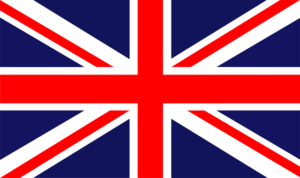
The United Kingdom (UK) is a significant importing country for home textiles products. The UK market is known for its diverse consumer preferences, which drive the demand for a wide range of home textiles. Here are some key points about the UK as an importing country for home textiles:
- High Demand: The UK has a large population with a strong interest in home decor and interior design. Consumers in the UK seek home textiles that reflect their individual styles and tastes, leading to a considerable demand for imported products.
- Product Diversity: The UK imports a variety of home textiles products, including bedding, towels, curtains, rugs, cushions, and table linens. The market caters to different design trends and quality levels to meet consumer preferences.
- Import Sources: The UK imports home textiles products from various countries around the world. Key trading partners include countries within the European Union (EU), such as Portugal, Spain, and Turkey, as well as non-EU countries like India, China, and Pakistan.
- Retail and E-commerce: Home textiles are distributed through traditional retail stores, department stores, and online platforms in the UK. E-commerce has become increasingly popular, allowing consumers to access a wide range of products from international sellers.
- Seasonal Demand: The demand for specific home textiles products can vary seasonally. For example, there is a higher demand for warmer bedding and throws during colder months.
- Trade Agreements: As of my last update in September 2021, the UK had recently exited the EU, impacting trade dynamics. The conclusion of a trade agreement with the EU and other countries has influenced the import of home textiles products into the UK.
- Private Labeling and Collaboration: UK retailers often collaborate with international manufacturers to create private-label home textiles products or exclusive collections for their brands.
- Quality and Sustainability: UK consumers prioritize quality, durability, and sustainability. Importers must adhere to stringent quality control standards and comply with relevant safety and environmental regulations.
- Interior Design Trends: The UK has a strong interest in interior design and follows the latest home decor trends. This influences the import of home textiles to meet changing consumer preferences.
- Trade Events: The UK hosts various trade fairs and exhibitions related to home textiles, providing opportunities for international manufacturers to showcase their products and connect with UK buyers.
The UK’s role as an importing country for home textiles underscores its position as an influential market in the global home textiles industry. However, it’s important to note that trade dynamics may have changed since my last update, so consulting more recent trade data is advisable for the latest information.
JAPAN
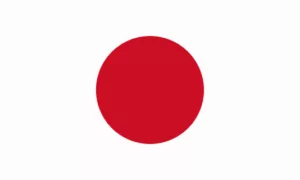
Japan is another significant importing country for home textiles products. As a highly developed nation with a large population, Japan has a strong demand for home textiles to meet the diverse needs and preferences of its consumers. Here are some key points about Japan as an importing country for home textiles:
- High Quality Standards: Japanese consumers value high-quality products, and this preference extends to home textiles. As a result, Japan imports home textiles that meet strict quality standards and are known for their durability and craftsmanship.
- Product Diversity: Japan imports a wide range of home textiles products, including bedding, towels, curtains, rugs, table linens, and more. The market caters to different design styles and functional requirements.
- Import Sources: Japan imports home textiles from various countries, including neighboring Asian countries like China, South Korea, and India. Additionally, countries with strong textile manufacturing industries like Turkey and some European countries are also significant sources of imports.
- Retail and Department Stores: Home textiles products are available in various retail outlets and department stores across Japan. These stores offer both domestic and imported home textiles to cater to the preferences of Japanese consumers.
- Seasonal Demand: Like in other countries, the demand for specific home textiles products in Japan can vary seasonally. For example, there may be increased demand for lightweight bedding and cooling fabrics during the hot summer months.
- Interior Design Trends: Japanese consumers have a strong interest in interior design and home decor. They often look for modern and minimalist designs that complement their living spaces.
- Eco-Friendly and Sustainable Products: Sustainability is becoming increasingly important to Japanese consumers. Importers of home textiles must consider eco-friendly and sustainable practices to meet consumer expectations.
- Trade Agreements: Japan’s trade agreements with various countries can influence the import of home textiles by reducing or eliminating tariffs and trade barriers.
- Traditional Textile Crafts: Japan has a rich tradition of textile craftsmanship. Some home textiles products may be imported to satisfy the demand for traditional and artisanal items.
- Trade Events: Japan hosts trade fairs and exhibitions related to home textiles, providing opportunities for international manufacturers to showcase their products and connect with Japanese buyers.
Japan’s demand for imported home textiles reflects its position as a major player in the global home textiles market. As with any trade, it’s important to keep in mind that trade dynamics can change over time due to various factors, including economic conditions and consumer preferences. For the latest information, consulting more recent trade data is recommended.
FRANCE

France is a prominent importing country for home textiles products. With its large population and strong interest in interior design and home decor, France offers a significant market for various home textiles. Here are some key points about France as an importing country for home textiles:
- High Demand: French consumers have a sophisticated taste for home textiles, valuing quality, design, and functionality. The demand for home textiles products is driven by the desire to create aesthetically pleasing and comfortable living spaces.
- Product Diversity: France imports a wide array of home textiles products, including bedding, towels, curtains, rugs, upholstery fabrics, and table linens. The market caters to different styles, ranging from traditional to contemporary.
- Import Sources: France sources home textiles from various countries, including other European countries like Italy, Portugal, Spain, and Turkey, as well as Asian countries like China and India, known for their textile manufacturing capabilities.
- Retail and Boutiques: Home textiles products are distributed through retail stores, boutiques, and department stores across France. French consumers often seek unique and high-quality products that reflect their individual style.
- Seasonal Demand: As with other countries, seasonal changes influence the demand for specific home textiles products in France. For example, there may be increased demand for cozy blankets and throws during the colder months.
- Interior Design and Fashion Trends: France is renowned for its fashion and design industries, and these trends heavily influence the home textiles market. French consumers often seek textiles that reflect the latest design and fashion trends.
- Eco-Friendly and Sustainable Products: Sustainability is a growing concern among French consumers. Importers of home textiles must consider eco-friendly and sustainable practices to meet consumer demands.
- Trade Agreements: France’s membership in the European Union (EU) allows for the free movement of goods within the EU member countries, facilitating trade with other European nations.
- Trade Events: France hosts various trade fairs and exhibitions related to home textiles, providing opportunities for international manufacturers to showcase their products and connect with French buyers.
- Private Labeling and Collaboration: French retailers often collaborate with international manufacturers to create private-label home textiles products or exclusive collections to appeal to their customers.
France’s position as a major importing country for home textiles emphasizes its role in the global home textiles market. As trade dynamics can change over time, it’s essential to refer to more recent trade data for the latest insights into France’s import activities in the home textiles industry.
CANADA

Canada is a significant importing country for home textiles products. With a sizable population and diverse consumer preferences, Canada’s demand for home textiles is substantial. Here are some key points about Canada as an importing country for home textiles:
- High Demand: Canadian consumers value home textiles products that offer both style and comfort. The demand for home textiles is driven by the need to create cozy and inviting living spaces.
- Product Diversity: Canada imports a wide range of home textiles products, including bedding, towels, curtains, rugs, upholstery fabrics, and table linens. The market caters to various design preferences and functional needs.
- Import Sources: Canada sources home textiles from various countries, including the United States, China, India, Pakistan, and Turkey. The proximity to the United States allows for efficient trade between the two countries.
- Retail and E-commerce: Home textiles products are available in retail stores, department stores, and online platforms across Canada. E-commerce has grown in popularity, offering consumers access to a broader range of products from international sellers.
- Seasonal Demand: As with other countries, seasonal changes influence the demand for specific home textiles products in Canada. For example, there may be increased demand for heavier bedding and warm throws during the colder months.
- Trade Agreements: Canada’s trade agreements, such as the Canada-United States-Mexico Agreement (CUSMA), can impact the import of home textiles by reducing or eliminating tariffs and facilitating trade with partner countries.
- Sustainability: Sustainability and eco-friendly practices are gaining importance among Canadian consumers. Importers of home textiles must consider environmental concerns to align with consumer preferences.
- Interior Design Trends: Canadian consumers follow interior design trends and look for home textiles products that complement their living spaces and reflect their personal style.
- Trade Shows: Canada hosts various trade shows and exhibitions related to home textiles, providing opportunities for international manufacturers to showcase their products and connect with Canadian buyers.
- Private Labeling and Collaboration: Canadian retailers often collaborate with international manufacturers to create private-label home textiles products or exclusive collections for their brands.
Canada’s role as an importing country for home textiles emphasizes its significance in the global home textiles market. As trade dynamics can change over time, it’s advisable to refer to more recent trade data for the latest insights into Canada’s import activities in the home textiles industry.
AUSTRALIA
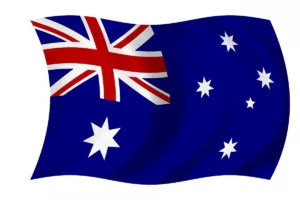
Australia is an important importing country for home textiles products. While Australia has a domestic textile industry, it still imports a significant amount of home textiles to meet consumer demand for a diverse range of products and to supplement its domestic production. Here are some key points about Australia as an importing country for home textiles:
- High Demand: Australian consumers value home textiles that combine quality, functionality, and style. The demand for home textiles is driven by the desire to create comfortable and aesthetically pleasing living spaces.
- Product Diversity: Australia imports a wide variety of home textiles products, including bedding, towels, curtains, rugs, cushions, and table linens. The market caters to different design trends and preferences.
- Import Sources: Australia sources home textiles from various countries around the world. Major exporting countries to Australia include China, India, Pakistan, Turkey, and some European countries.
- Retail and E-commerce: Home textiles products are available through retail stores, department stores, and online platforms across Australia. E-commerce has grown in popularity, allowing consumers to access products from international sellers.
- Seasonal Demand: As with other countries, seasonal changes influence the demand for specific home textiles products in Australia. For example, there may be increased demand for lightweight and breathable bedding during the hot summer months.
- Trade Agreements: Australia’s trade agreements with various countries and regions can influence the import of home textiles by reducing or eliminating tariffs and trade barriers.
- Sustainability: Sustainability and eco-friendly practices are becoming increasingly important to Australian consumers. Importers of home textiles must consider environmental concerns to align with consumer preferences.
- Interior Design Trends: Australian consumers follow interior design trends and look for home textiles products that reflect the latest styles and designs.
- Trade Shows: Australia hosts various trade shows and exhibitions related to home textiles, providing opportunities for international manufacturers to showcase their products and connect with Australian buyers.
- Private Labeling and Collaboration: Australian retailers often collaborate with international manufacturers to create private-label home textiles products or exclusive collections for their brands.
Australia’s role as an importing country for home textiles emphasizes its significance in the global home textiles market. As trade dynamics can change over time, it’s advisable to refer to more recent trade data for the latest insights into Australia’s import activities in the home textiles industry.
NETHERLANDS

The Netherlands is an important importing country for home textiles products. The Netherlands has a thriving retail sector and a high standard of living, contributing to significant demand for home textiles to furnish and decorate homes. Here are some key points about the Netherlands as an importing country for home textiles:
- High Demand: Dutch consumers place emphasis on quality, design, and functionality when it comes to home textiles. The demand for home textiles is driven by the desire to create stylish and comfortable living spaces.
- Product Diversity: The Netherlands imports a wide range of home textiles products, including bedding, towels, curtains, rugs, upholstery fabrics, and table linens. The market caters to different design preferences and functional requirements.
- Import Sources: The Netherlands sources home textiles from various countries, including neighboring European countries, such as Belgium, Germany, and Turkey, as well as Asian countries like China, India, and Pakistan.
- Retail and E-commerce: Home textiles products are available through physical retail stores, department stores, and online platforms in the Netherlands. E-commerce has grown in popularity, enabling consumers to access products from international sellers.
- Trade Agreements: The Netherlands is part of the European Union (EU), which facilitates trade with other EU member countries. The EU’s trade agreements with various countries and regions can influence the import of home textiles by reducing or eliminating tariffs and trade barriers.
- Seasonal Demand: Like in other countries, seasonal changes influence the demand for specific home textiles products in the Netherlands. For example, there may be increased demand for warmer bedding during the colder months.
- Sustainability: Sustainability and eco-friendly practices are gaining importance among Dutch consumers. Importers of home textiles must consider environmental concerns to align with consumer preferences.
- Interior Design Trends: Dutch consumers follow interior design trends and look for home textiles products that reflect the latest styles and design aesthetics.
- Trade Events: The Netherlands hosts various trade fairs and exhibitions related to home textiles, providing opportunities for international manufacturers to showcase their products and connect with Dutch buyers.
- Private Labeling and Collaboration: Dutch retailers often collaborate with international manufacturers to create private-label home textiles products or exclusive collections for their brands.
The Netherlands’ role as an importing country for home textiles highlights its significance in the global home textiles market. As trade dynamics can change over time, it’s advisable to refer to more recent trade data for the latest insights into the Netherlands’ import activities in the home textiles industry.
Top 8 Home Textiles Importing Countries: Top 8 Home Textiles Importing Countries: Top 8 Home Textiles Importing Countries
*Author’s Short Profile:

Mr. Md. Joynal Abdin is a Business Consultant & Digital Marketer based in Dhaka, Bangladesh. He is also Co-Founder & CEO of Bangladesh Trade Center. Previously he served at Dhaka Chamber of Commerce & Industry (DCCI) as Executive Secretary; DCCI Business Institute (DBI) as Executive Director; SME Foundation as Deputy Manager; and the Federation of Bangladesh Chambers of Commerce & Industry (FBCCI) as Assistant Secretary.
The list of services Mr. Abdin is offering includes but not limited to Business Research and Documentations like Feasibility Study, Project Proposal Preparation, Writing Business Manual, Standard Operating Procedures etc.; Export Market Selection and Product Positioning at Home and Abroad; Buyers-Sellers Matchmaking; Website Development; Search Engine Optimization (SEO); and Social Media Marketing etc.
Top 8 Home Textiles Importing Countries: Top 8 Home Textiles Importing Countries: Top 8 Home Textiles Importing Countries
Developing Bangladesh Bangladesh Trade Center Read More…

